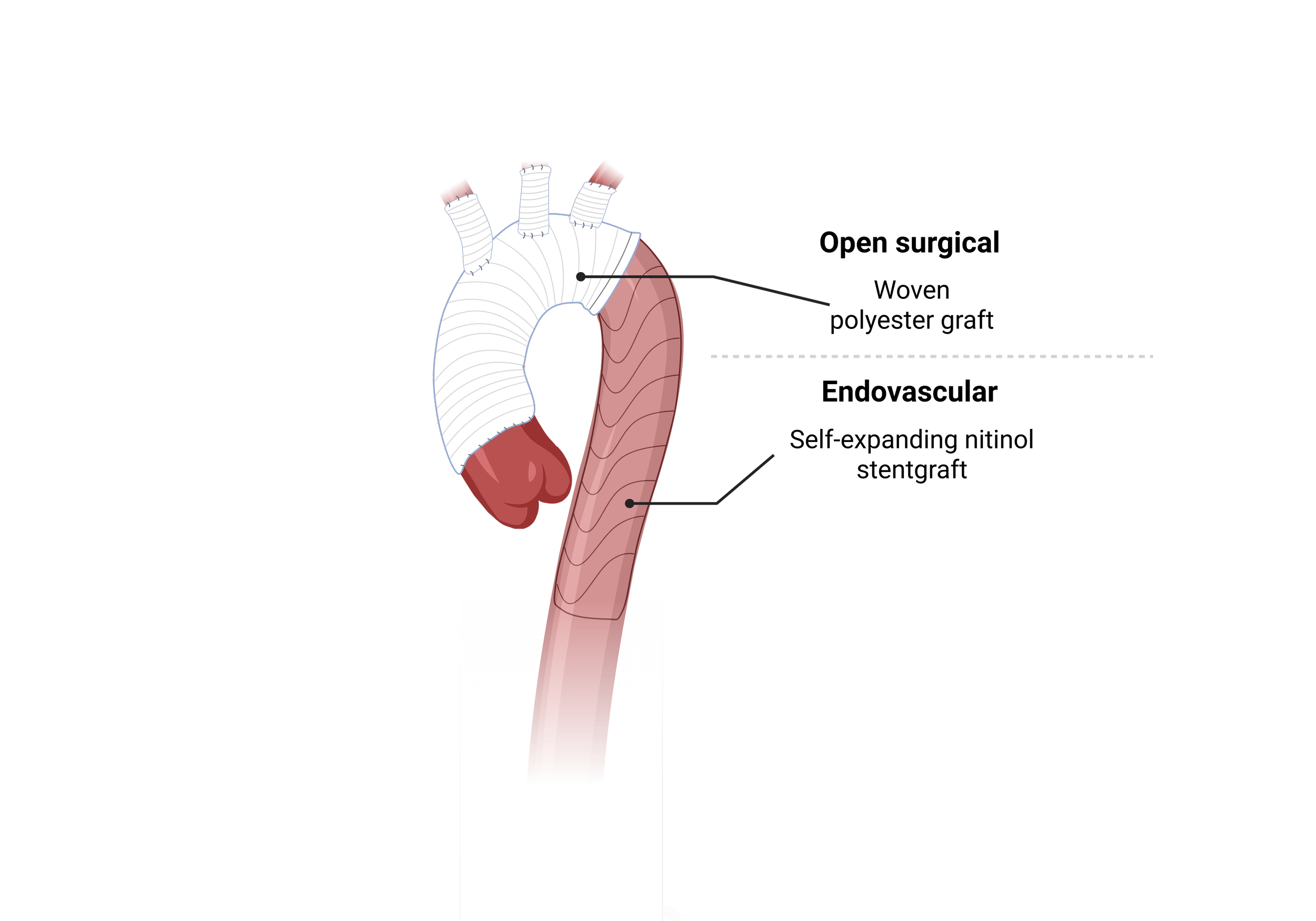Hybrid Aortic Repair
What Is Hybrid Treatment?
Hybrid treatment involves special, carefully planned procedures that combine surgery and minimally invasive techniques at the same time or in a single operation. These advanced approaches are designed to fix complex problems in the aorta that affect different regions, and wouldn’t be treatable with just surgery or stent grafts alone without vastly extending the invasiveness of the procedure.
How Does It Work?
Hybrid procedures work by using both surgical and endovascular (from inside the vessel) tools in a single, coordinated strategy. For example:
In the Frozen Elephant Trunk (FET), surgeons replace part of the aortic arch with an artificial graft and, at the same time, place a stent graft further down into the descending aorta. This connects repairs in two difficult areas in one step.
Illustration of a FET Prosthesis
In hybrid thoracoabdominal prosthesis procedures, a combination of open surgery and endovascular stents is used to repair large sections of the aorta from the chest into the abdomen.
For some patients, surgeons first perform open debranching of the arch, rerouting the blood vessels that branch off the aorta, to prepare for placing a stent graft that can safely repair the rest of the arch or descending aorta.
When Is Hybrid Treatment Used?
Hybrid techniques are used for:
Large or complex aneurysms involving more than one section of the aorta.
Disease near important branching arteries, such as those that supply the brain or abdominal organs.
Patients who need a durable repair in areas not safely reached by surgery or stenting alone.
Your doctors will recommend a hybrid approach if it offers the best balance of safety and durability for your situation.
Benefits and Limitations
Benefits:
Allows repair of long or complicated aortic segments in a single stage.
Reduces the need for multiple high-risk surgeries.
Can help lower the risk of complications for certain difficult-to-treat aneurysms and dissections.
Limitations:
These are complex procedures, requiring specialized surgical teams and advanced planning.
Like all major aortic interventions, they may require longer recovery and careful follow-up with imaging.
What to Expect During the Procedure
You’ll have the procedure in a specialized surgical and imaging suite. Under anesthesia, the surgical team will perform the open (surgical) and endovascular (stent graft) parts during the same operation or stage. For example, with FET, a part of your aorta is replaced with a graft, and a stent graft is carefully placed through the same incision to extend the repair further down the vessel. After surgery, you’ll stay in the hospital for monitoring and recovery.
Possible Risks and Complications
Risks are similar to other major aortic surgeries and may include bleeding, infection, temporary changes in kidney function, or, rarely, complications like stroke or death. There’s also the potential for leaks or further procedures if the aorta changes shape over time. Most of these risks are carefully managed, and modern techniques have made these procedures much safer.
Specific Hybrid Treatment for you
Hybrid procedures such as the Frozen Elephant Trunk (FET), hybrid thoracoabdominal repair, and open debranching followed by stent grafting are special solutions for complex aorta disease. They offer a way to fix areas that would otherwise be impossible to repair with only one type of procedure.
If one of these treatments is suggested for you, your surgical team will guide you step by step, making sure you understand every part and feel prepared.

